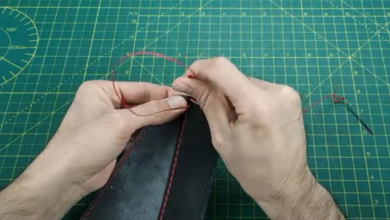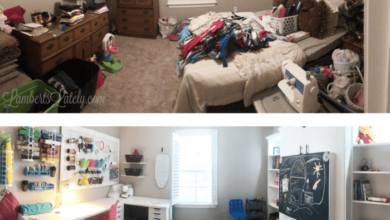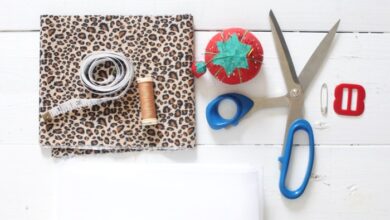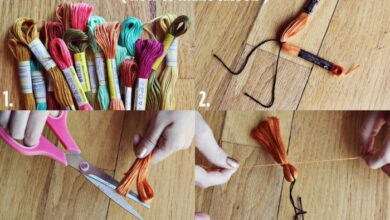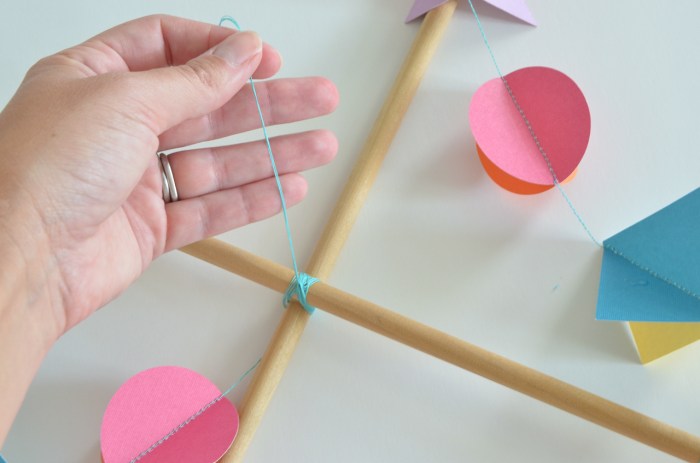
DIY colorful geometric necklaces are a fantastic way to express your personal style and create unique, eye-catching jewelry. Geometric shapes have a timeless appeal, adding structure and visual interest to any design. Coupled with vibrant colors, you can craft necklaces that are both modern and captivating.
This DIY guide will take you through the process, from choosing materials to assembling your own geometric masterpieces.
The beauty of DIY jewelry making lies in the freedom to experiment and personalize. You can choose your favorite colors, shapes, and embellishments to create a necklace that reflects your individual taste. Whether you’re a seasoned crafter or a complete beginner, this guide will equip you with the knowledge and inspiration to embark on your own geometric jewelry journey.
Introduction to DIY Colorful Geometric Necklaces
Geometric shapes have always held a special appeal in jewelry design, offering a timeless elegance and a sense of modern sophistication. From the classic triangle to the intricate hexagon, these shapes create visually striking and balanced pieces that effortlessly elevate any outfit.
The beauty of geometric necklaces lies in their ability to create a sense of structure and order, while still maintaining a sense of playfulness and individuality. The clean lines and sharp angles of these shapes provide a stark contrast to the often-flowing and organic nature of other jewelry designs, making them a truly unique and captivating choice.
The Significance of Color
Color plays a pivotal role in crafting unique and eye-catching geometric necklaces. Each hue evokes different emotions and associations, allowing you to express your personal style and creativity through the colors you choose. For instance, a vibrant turquoise necklace can evoke feelings of tranquility and serenity, while a bold red necklace can radiate confidence and passion.The use of color in geometric necklaces is not limited to the gemstones or beads used.
It can also be incorporated through the metal used, the finish, and even the patterns created by the arrangement of shapes. This versatility allows for endless possibilities, enabling you to create necklaces that are truly one-of-a-kind.
DIY Approach to Necklace Making
The DIY approach to necklace making empowers you to design and create personalized jewelry that reflects your individual style and preferences. It allows you to experiment with different shapes, colors, and materials, and to create pieces that are truly unique and meaningful.The process of making your own geometric necklaces is not as daunting as it may seem.
I’ve been having so much fun making DIY colorful geometric necklaces lately! I love how each piece turns out unique and reflects my own style. I’m also really into upcycling and repurposing things, so I’m thinking about creating a little crafting station where I can keep all my supplies organized.
I think I’ll make a make magnetic clipboard chalkboard to hang on the wall and use it to jot down my ideas and inspiration. Then, I can use it to display my finished necklaces and show them off to everyone!
With readily available materials and online resources, you can easily learn the basics of jewelry making and start creating your own stunning pieces.
Materials and Tools
Creating colorful geometric necklaces requires a combination of materials and tools that allow you to cut, shape, and assemble your design. Choosing the right materials and tools is crucial for achieving a beautiful and durable finished product.
I love the way the bright colors of my DIY geometric necklaces pop against my summer wardrobe. It reminds me of those vibrant sunsets we get in July, the kind that make you want to grab a cold drink and watch the world go by.
Speaking of drinks, have you ever tried a peaches whiskey ice cream float ? It’s the perfect combination of sweet and boozy, and it’s a great way to cool down on a hot day. Anyway, back to the necklaces, I’m thinking of adding some more intricate designs using different textures and materials.
Maybe I’ll even try incorporating some of those sunset colors into my next batch.
Materials
The materials you choose will determine the look and feel of your necklace. Here are some essential materials for creating colorful geometric necklaces:
- Beads:Beads are the primary component of your necklace, offering a wide array of colors, shapes, and sizes. Choose beads that complement your geometric design and overall aesthetic. Consider using beads made from materials like glass, metal, plastic, or wood, each offering unique characteristics and visual appeal.
- Wire:Wire is used for stringing beads and creating the geometric shapes. Choose wire that is strong enough to hold the weight of the beads but flexible enough for easy manipulation. Jewelry wire, available in various gauges, is a popular choice for its durability and flexibility.
- Findings:Findings are small components used to complete your necklace, such as clasps, jump rings, and earring wires. They provide a secure closure and allow you to attach other embellishments. Choose findings that match the style and color of your beads and wire.
- Stringing Material:Stringing material, such as fishing line or beading thread, is used to connect beads to the wire. Choose a strong and durable material that can withstand the weight of the beads without breaking or stretching.
- Optional Materials:Depending on your design, you may consider using additional materials like charms, pendants, or decorative elements. These can enhance the visual appeal of your necklace and add a personal touch.
Tools
The right tools are essential for creating geometric shapes and assembling your necklace. Here are some essential tools for creating colorful geometric necklaces:
- Wire Cutters:Wire cutters are used to cut wire to the desired length. Choose wire cutters that are sharp and strong enough to cut through the wire without damaging it.
- Round Nose Pliers:Round nose pliers are used to create loops and bends in wire. They are essential for shaping the geometric elements of your necklace.
- Flat Nose Pliers:Flat nose pliers are used to hold and manipulate wire while shaping it. They provide a firm grip and help you create precise bends.
- Chain Nose Pliers:Chain nose pliers are used to hold and manipulate small components, such as jump rings and clasps. They have a long, narrow nose that allows for precise manipulation.
- Beading Needle:A beading needle is used to string beads onto the wire or stringing material. Choose a needle that is sharp and strong enough to pass through the beads without breaking.
- Measuring Tape:A measuring tape is used to measure the wire and beads for accurate sizing. It helps ensure that your necklace fits comfortably and looks balanced.
Choosing High-Quality Materials and Tools
Investing in high-quality materials and tools will make a significant difference in the durability and appearance of your necklace. Look for materials and tools that are made from durable materials, such as stainless steel, titanium, or high-quality plastic. Ensure the tools are sharp, strong, and well-made.
Choose beads that are smooth, free from imperfections, and have a consistent color. When choosing materials and tools, consider your budget and the level of detail you want to achieve.
Geometric Shape Exploration
Geometric shapes form the foundation of many necklace designs, offering a diverse range of visual aesthetics and symbolic meanings. From simple lines to intricate patterns, geometric shapes add structure, balance, and a touch of sophistication to your creations.
Geometric Shapes in Necklace Design
Geometric shapes play a crucial role in necklace design, adding visual interest and a sense of order. Here are some common geometric shapes used in necklace designs:
- Circles: Circles represent eternity, unity, and wholeness. They are often used in pendant designs, adding a touch of elegance and simplicity.
- Triangles: Triangles symbolize strength, stability, and balance. They can be used to create bold statement pieces or delicate and intricate designs.
- Squares: Squares represent structure, order, and practicality. They are often used in minimalist designs, adding a touch of modernism and sophistication.
- Rectangles: Rectangles are versatile shapes that can be used to create both classic and modern designs. They offer a balance of structure and fluidity.
- Hexagons: Hexagons are often associated with nature, particularly with honeycomb structures. They offer a unique and eye-catching design element.
- Pentagons: Pentagons are less common in necklace designs, but they offer a unique and geometrically intriguing shape.
Creating Basic Geometric Shapes
Creating basic geometric shapes using wire or other materials is a fundamental skill in jewelry making. Here are some tips on how to create basic shapes:
- Circles: To create a circle, wrap wire around a cylindrical object, such as a pencil or a dowel rod. Secure the end of the wire and then remove the object.
- Triangles: To create a triangle, bend a piece of wire into a V shape. Then, bend the two ends of the wire to meet at a point, forming the apex of the triangle.
- Squares: To create a square, bend a piece of wire into a right angle. Repeat this process three more times, ensuring each angle is 90 degrees.
- Rectangles: To create a rectangle, follow the same process as for creating a square, but adjust the length of the sides to create a longer or shorter rectangle.
- Hexagons: To create a hexagon, use a compass to draw a circle. Then, divide the circle into six equal segments using a protractor or ruler. Connect the points of the segments to form a hexagon.
- Pentagons: To create a pentagon, use a compass to draw a circle. Then, divide the circle into five equal segments using a protractor or ruler. Connect the points of the segments to form a pentagon.
Color Combinations and Techniques: Diy Colorful Geometric Necklaces
The art of combining colors is an essential aspect of jewelry design, influencing the overall aesthetic appeal and message of your creation. By understanding color theory, you can create harmonious and visually appealing color combinations that elevate your geometric necklaces to new heights.
Color Theory Principles
Color theory provides a framework for understanding how colors interact and influence each other. By applying these principles, you can create balanced and visually appealing color combinations for your necklaces.
Primary Colors:Red, yellow, and blue are the primary colors. They cannot be created by mixing other colors. Secondary Colors:Orange, green, and violet are created by mixing two primary colors. Tertiary Colors:Tertiary colors are created by mixing a primary color with a neighboring secondary color.
Complementary Colors:Complementary colors are located opposite each other on the color wheel. They create a high contrast and can be used to create a vibrant and eye-catching effect. Analogous Colors:Analogous colors are located next to each other on the color wheel. They create a harmonious and subtle effect.
Triadic Colors:Triadic colors are evenly spaced on the color wheel. They create a balanced and visually appealing effect.
Harmonious Color Combinations
There are numerous ways to create harmonious color combinations for your geometric necklaces.
- Monochromatic:This approach uses different shades, tints, and tones of a single color. For example, you can use various shades of blue for a calming and elegant effect. This creates a cohesive and sophisticated look, ideal for a minimalist aesthetic.
- Analogous:This combination uses colors that are adjacent to each other on the color wheel. For example, you can combine blue, green, and yellow for a refreshing and natural feel. This creates a balanced and harmonious effect, evoking feelings of nature and tranquility.
- Complementary:This combination uses colors that are opposite each other on the color wheel. For example, you can combine blue and orange for a bold and vibrant effect. This creates a high-contrast and eye-catching effect, suitable for statement pieces.
- Triadic:This combination uses three colors that are evenly spaced on the color wheel. For example, you can combine red, yellow, and blue for a vibrant and energetic effect. This creates a balanced and visually appealing effect, offering a sense of dynamism and excitement.
Color Techniques, Diy colorful geometric necklaces
Various color techniques can be employed to create unique and visually interesting geometric necklaces.
Gradient
A gradient is a gradual transition between two or more colors. This technique creates a smooth and visually appealing effect, adding depth and dimension to your designs.
- Linear Gradient:Colors transition in a straight line, creating a sense of movement and direction.
- Radial Gradient:Colors transition from a central point outward, creating a circular effect.
Ombre
Ombre is a technique that creates a gradual transition from a darker shade to a lighter shade of the same color. This technique creates a soft and ethereal effect, perfect for adding a touch of elegance to your necklaces.
Contrasting Colors
Contrasting colors are colors that are opposite each other on the color wheel. This technique creates a bold and eye-catching effect, perfect for statement pieces.
- Complementary Colors:These colors create the highest contrast and can be used to create a vibrant and eye-catching effect. For example, blue and orange, red and green, or yellow and purple.
- Split Complementary Colors:This technique uses a color and two colors that are adjacent to its complement. For example, using blue, orange-red, and orange-yellow. This creates a more balanced contrast than using complementary colors.
Necklace Construction Methods
Now that you’ve got your colorful geometric shapes ready, it’s time to put them together into a stunning necklace! There are several methods for assembling these shapes into a necklace, each with its own unique look and feel. Let’s explore some popular techniques.
Joining Geometric Shapes
Joining geometric shapes is the foundation of creating your necklace. You can use a variety of methods to connect the shapes, depending on your desired look and the materials you’re using.
- Wire Wrapping:This method involves wrapping wire around the edges of your shapes to create secure connections. It’s a versatile technique that can be used to create intricate designs. You can use different wire gauges and colors to add visual interest.
- Jump Rings:Jump rings are small, circular pieces of wire that are used to connect shapes. They’re easy to use and come in various sizes and metals. Simply open the ring, attach it to one shape, and then close it around the other shape.
I love the idea of making DIY colorful geometric necklaces, especially for a special occasion. It’s a fun way to personalize your look, and the possibilities are endless! I actually made a few for my own wedding day, adding a touch of whimsy to my bridal look.
You can check out my wedding day getting ready experience here if you’re interested! Now, back to those necklaces – I think I’ll try making a new one with some of my favorite gemstones.
- Beading Wire:Beading wire is a strong, flexible wire that’s ideal for stringing beads and geometric shapes. It comes in different thicknesses and colors. Thread your shapes onto the wire, using beads or spacers to create visual separation between the shapes.
- Glue:For lightweight materials like paper or felt, glue can be used to secure shapes together. Choose a strong adhesive that’s suitable for your materials and allow it to dry completely before handling the necklace.
Creating Links and Chains
Links and chains are essential elements for creating a cohesive necklace. You can create your own links using wire wrapping techniques or use pre-made links for a faster assembly.
- Wire Wrapped Links:You can create links by wrapping wire around a small piece of wire or a bead. Experiment with different wire gauges and shapes to create unique links.
- Chain Notions:Chain notions are pre-made links and chains that can be used to assemble your necklace quickly. They come in various styles, sizes, and materials. Use jump rings to connect your geometric shapes to the chain.
Creating Pendants
Pendants are a great way to add a focal point to your necklace. You can create your own pendants using geometric shapes or purchase pre-made pendants.
- Geometric Pendant:Create a pendant by assembling several geometric shapes into a larger design. You can use wire wrapping, jump rings, or glue to secure the shapes together.
- Pre-made Pendant:Use a pre-made pendant as a focal point for your necklace. Choose a pendant that complements your geometric shapes and color scheme.
Step-by-Step Necklace Assembly
Let’s put together a simple necklace using geometric shapes and wire wrapping techniques.
- Gather your materials:You’ll need geometric shapes, wire, wire cutters, and pliers.
- Create a chain:Wrap wire around a small piece of wire to create a link. Repeat this process to create several links and connect them together using jump rings.
- Attach geometric shapes:Wrap wire around the edges of your geometric shapes to create loops. Attach these loops to the chain using jump rings.
- Add a clasp:Attach a clasp to the ends of your chain using jump rings.
- Enjoy your necklace!
Finishing Touches and Customization
The magic of DIY jewelry lies in the ability to add personal touches that make each piece truly unique. While the geometric shapes and vibrant colors are the foundation of your necklace, it’s the finishing touches and customization that elevate it from a simple project to a cherished piece of art.
Imagine a necklace that not only showcases your artistic flair but also reflects your personality. This is where the art of customization comes in. By adding closures, embellishments, and personal touches, you transform your necklace into a statement piece that tells your story.
Closure Options
The closure is the unsung hero of any necklace, ensuring it stays securely in place while adding a final touch of elegance. Here are some popular options:
- Lobster Clasp:A reliable and widely used option, perfect for both delicate and chunky necklaces.
- Toggle Clasp:Adds a touch of sophistication with its simple yet elegant design. It’s ideal for necklaces with a more minimalist aesthetic.
- Magnetic Clasp:A convenient choice for easy on-and-off wear, particularly for necklaces with intricate designs.
- S-Hook Clasp:Offers a secure closure with a subtle, understated design, perfect for necklaces with a modern edge.
Embellishments and Personal Touches
Embellishments are like the finishing touches on a masterpiece, adding depth, texture, and a touch of whimsy to your necklace.
- Beads:Add a touch of sparkle with crystal beads, create a bohemian vibe with wooden beads, or enhance the geometric theme with faceted beads.
- Charms:Personalize your necklace with charms that reflect your interests, hobbies, or special memories. Consider charms with zodiac signs, initial letters, or symbols that hold meaning to you.
- Tassels:Add a playful touch with colorful tassels that sway gently with each movement.
- Pendants:Create a focal point with a statement pendant that complements the geometric shapes of your necklace.
Inspiration and Design Ideas
The world of geometric shapes and vibrant colors offers endless possibilities for creating unique and eye-catching necklaces. Let your imagination run wild and explore the diverse array of styles and designs that can be achieved through DIY geometric necklaces.
Inspiration Sources
To spark your creativity, it’s essential to explore various sources of inspiration. The world around us is brimming with geometric patterns and color combinations that can translate beautifully into necklace designs.
- Nature:Observe the intricate patterns found in nature, such as the hexagonal structure of a honeycomb, the spiral of a seashell, or the symmetrical arrangement of petals in a flower. These natural designs can serve as inspiration for geometric shapes and color palettes.
- Architecture:Explore the architectural wonders of different cultures, from the geometric patterns of Islamic mosaics to the modern lines of skyscrapers. The interplay of shapes and colors in architecture can provide valuable design inspiration.
- Art:Immerse yourself in the world of art, from abstract paintings to geometric sculptures. Artists often explore the relationships between shapes, colors, and textures, offering a wealth of ideas for your own necklace designs.
- Fashion:Pay attention to current fashion trends and the geometric elements incorporated into clothing and accessories. This can provide insights into popular styles and color combinations.
Exploring Online Resources and Social Media
The internet is a treasure trove of inspiration for DIY projects. Explore online resources and social media platforms to discover a vast array of geometric necklace designs and tutorials.
- Pinterest:Search for s like “geometric necklace DIY,” “colorful jewelry,” or “geometric patterns” to find a plethora of inspiration.
- Instagram:Follow accounts dedicated to DIY jewelry, geometric art, and fashion to stay up-to-date on the latest trends and discover unique designs.
- YouTube:Find step-by-step tutorials on creating geometric necklaces using various materials and techniques.
- Blogs and Websites:Explore blogs and websites dedicated to DIY crafting and jewelry making for detailed instructions and inspiration.
Design Ideas
Here are some design ideas to get your creative juices flowing:
| Image | Description |
|---|---|
| [Image of a necklace with a large, colorful, geometric pendant, possibly a triangle or hexagon.] | A statement necklace featuring a bold, colorful geometric pendant. The pendant can be made from various materials, such as acrylic, wood, or metal. |
| [Image of a necklace with multiple smaller geometric shapes strung together, creating a layered effect.] | A layered necklace with multiple geometric shapes strung together, creating a dynamic and visually interesting design. The shapes can be of different sizes and colors, allowing for endless combinations. |
| [Image of a necklace with a simple geometric shape, such as a circle or square, accented with colorful beads or stones.] | A minimalist necklace with a simple geometric shape, accented with colorful beads or stones for a touch of elegance. |
| [Image of a necklace with a geometric pattern created by weaving together colorful threads or cords.] | A necklace with a geometric pattern created by weaving together colorful threads or cords. This technique allows for intricate designs and a unique textural element. |
Tips for Beginners

Embarking on your DIY necklace-making journey can be both exciting and a little daunting. Don’t worry, though! With a few helpful tips and a dash of patience, you’ll be crafting stunning necklaces in no time. Here are some pointers to get you started and keep you on track.
Choosing the Right Materials
Selecting the right materials is crucial for a successful and enjoyable crafting experience. It’s essential to consider the type of necklace you want to create and the desired aesthetic. For beginners, it’s wise to start with materials that are easy to work with and readily available.
- Wire:Choose a wire gauge that’s suitable for the size and weight of your geometric shapes. For beginners, a thinner gauge wire like 20 or 22 gauge is recommended. It’s more forgiving and easier to manipulate.
- Beads:Explore different types of beads, such as glass, metal, or gemstone, to find what suits your design.
Start with beads that have larger holes to make threading easier.
- Findings:These include clasps, jump rings, and wire cutters. Choose findings that are compatible with your chosen wire gauge and bead sizes.
Troubleshooting Common Challenges
Every crafter encounters challenges, and DIY necklace making is no exception. Here’s how to tackle some common issues:
- Wire Bending:If you’re struggling to bend the wire into your desired shape, try using pliers or a wire bender to help you create clean and precise curves.
- Bead Threading:If you’re having trouble threading beads, try using a beading needle or a small crochet hook.
You can also use a beading threader for larger beads.
- Wire Cutting:Ensure you use wire cutters specifically designed for jewelry making. These cutters will provide a clean and precise cut, minimizing frayed edges.
Experimenting with Color Combinations
Color plays a significant role in the overall aesthetic of your necklace. Experiment with different color combinations to find what resonates with you.
- Analogous Colors:These are colors that sit next to each other on the color wheel, creating a harmonious and balanced look.
- Complementary Colors:These are colors that sit opposite each other on the color wheel, providing high contrast and a vibrant feel.
- Triadic Colors:These are three colors that are evenly spaced on the color wheel, offering a dynamic and eye-catching combination.

